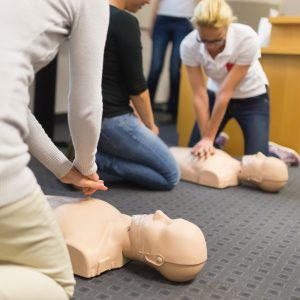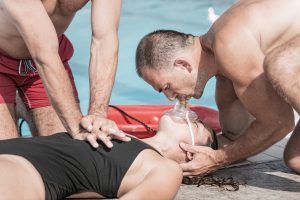
Cardiopulmonary Resuscitation or CPR includes some techniques that aim at renewing the circulation of blood and supply of oxygen within your body which may have been compromised due to either your health condition or an accident.CPR also restores the blood circulation to the heart and brain before any irreversible damage is caused. These crises can take place either at home or in a public place, but statistics show that most take place at home.
Learning how to administer CPR can help you make a big difference to someone who suffered such an attack. So, what exactly is CPR? Below are five things you should know about it:
CPR is a procedure used to people who suffer from heart attacks. This is a stop-gap method used to try and keep the victim alive until proper medical care can be administered. When a heart attack occurs, oxygen flow is cut off from the brain which can only go without it for about 5 minutes. Any more than that can result in brain damage. CPR allows the unconscious victim to receive a steady flow of oxygen until he or she comes around and can breathe on their own.
It is easy to administer this procedure you just have to compress the victim’s chest with the palms of your hands and use mouth-to-mouth resuscitation, alternately. Besides being used commonly on heart attack victims, CPR can also be used on people who have overdosed on drugs and victims of drowning.
CPR is mostly used when and if there is no medical aid immediately available. Earlier, a medical expert had to check for a pulse before CPR could be carried out. Now, however, a doctor, nurse or medical emergency technician (EMT) does not have to do so and can start administering CPR immediately if he or she deems it necessary. This also means that you too can administer CPR without waiting for a green light from a professional. This means that the victim has a higher chance of survival.
 Lately, the conventional method of administering CPR has been replaced by a technique requiring only the hands to be used, leaving out mouth-to-mouth resuscitation. Some circumstances, for instance, when a drowning victim is involved, still require the conventional method to be used. Overall, however, this new technique seems to quite successful.
Lately, the conventional method of administering CPR has been replaced by a technique requiring only the hands to be used, leaving out mouth-to-mouth resuscitation. Some circumstances, for instance, when a drowning victim is involved, still require the conventional method to be used. Overall, however, this new technique seems to quite successful.
There may be times when you will need to use CPR on a baby or young child, or even on your pet. When administering CPR to babies or children, you have to be much gentler when pressing the chest because the risk of breaking their ribs is much higher than in an adult. This could lead to their lungs being punctured. For animals, CPR is administered by putting pressure on the top-left of their rib cage and forcing your breath through their nostrils.
Over the years, the CPR process has been made simpler and more basic, so it is not hard to learn. It is also easy to enroll yourself in a training class which is mostly taught in public community centers like schools, hospitals and so on – and if you are a business owner – of maybe a fence builders near me company it’s important that you provide these classes for your staff so you all know what to do in an emergency. If you were ever in a situation where you needed CPR, you would surely be praying that someone at home, or among the crowd, should you be in a public place, could come to your rescue. That should be motivation enough for you to go out and enroll yourself in class.